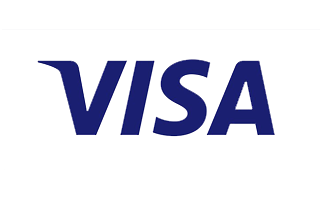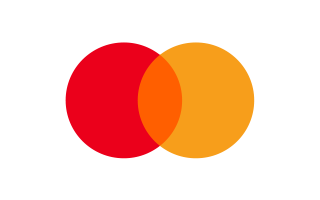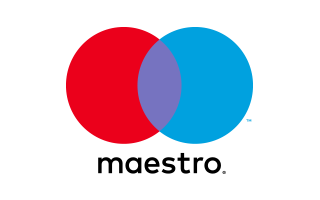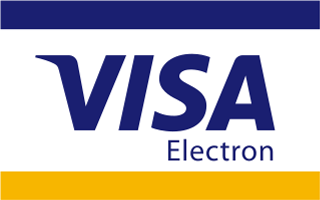Six Quick & Safe Methods for Installing Hair Extensions
Six Quick & Safe Methods for Installing Hair Extensions
Hair extensions provide versatility, allowing you to change your hairstyle without altering your natural hair length. They add volume, length, and texture. The ease or complexity of installing hair extensions depends on the chosen method. Unlike the past when only a few methods existed, there are now various ways to install weaves. Here are six methods:
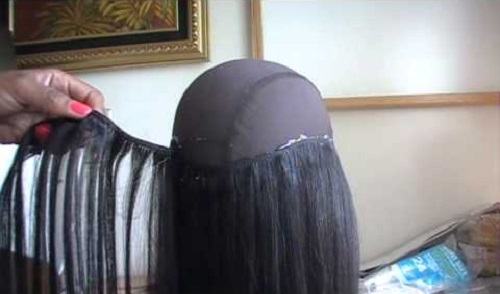
1. Quick weave (Glue)
A quick weave is a type of hair extension or wig installation technique that is faster and less time-consuming compared to traditional methods. It is a popular choice for individuals who want a temporary and versatile hairstyle without the commitment of long-term extensions. Here's a general overview of the quick weave process:
- Preparation: The client's natural hair is typically braided close to the scalp in a specific pattern, often in a circular or horseshoe shape. The braids create a foundation for attaching the weave or wig.
- Protective Layer: Before attaching the extensions, a protective layer, such as a stocking cap or weaving net, is applied over the braided hair. This layer helps to protect the natural hair and provides a base for attaching the extensions.
- Gluing or Bonding: Hair wefts (bundles of hair) are then attached to the protective layer using bonding glue or another adhesive. The extensions are strategically glued onto the cap in a layered manner, starting from the back and working towards the front.
- Blending: Once the weave is attached, the stylist blends the natural hair with the extensions to create a seamless look. This may involve cutting and styling the weave to achieve the desired length and shape.
- Styling: After blending, the hair is styled according to the client's preference. This can include curling, straightening, or leaving the hair in its natural texture.
Quick weaves are considered a quicker and less expensive option compared to sew-in weaves or other hair extension methods. However, it's important to note that the bonding glue used in the process can potentially cause damage to the natural hair if not applied or removed properly. Additionally, quick weaves are temporary and may last for a few weeks, depending on how well they are maintained.
It's crucial to consult with a professional stylist who is experienced in quick weave techniques to ensure a proper application and minimize the risk of damage to the natural hair.
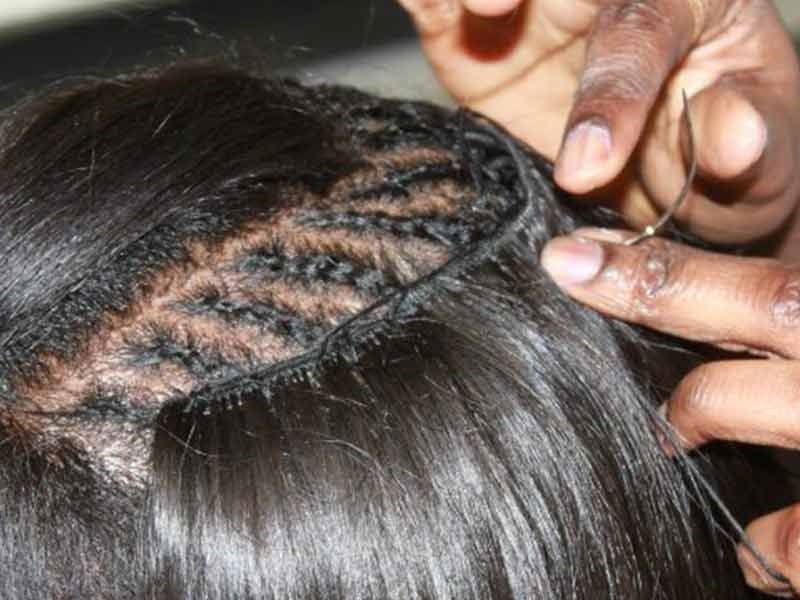
2. Sew-in hair
A sew-in weave, also known as a sew-in or sew-in extension, is a method of adding hair extensions to natural hair. In this process, the hair extensions are sewn onto braided natural hair using a needle and thread. This technique is commonly used to achieve longer hair, add volume, or experiment with different hairstyles. Here's a general overview of the sew-in weave process:
- Braiding: The natural hair is typically cornrowed close to the scalp in a specific pattern. The pattern of the braids depends on the desired final look, and they serve as a base for attaching the extensions.
- Base Net (Optional): Some stylists may use a weaving net as a base before sewing in the extensions. The net provides extra security and helps distribute the weight of the extensions more evenly across the scalp.
- Attaching Extensions: Hair wefts (bundles of hair) are then sewn onto the braided natural hair. The stylist uses a curved needle and thread to sew through the weft and the braided hair, securing the extension in place.
- Blending: Once the extensions are attached, the stylist blends the natural hair with the weave to create a seamless look. This may involve cutting and styling the weave to achieve the desired length and shape.
- Styling: After blending, the hair is styled according to the client's preference. This can include curling, straightening, or leaving the hair in its natural texture.
Sew-in weaves are known for their durability and versatility. They can last for several weeks or even months, depending on the quality of the installation and how well they are maintained. It's important to care for the hair and scalp underneath the weave to prevent issues such as breakage or damage.
While sew-in weaves can be a great way to experiment with different looks, it's crucial to have them installed by a professional stylist to ensure proper technique and minimize the risk of damage to the natural hair. Additionally, regular maintenance and care are essential to keep the weave and natural hair healthy.
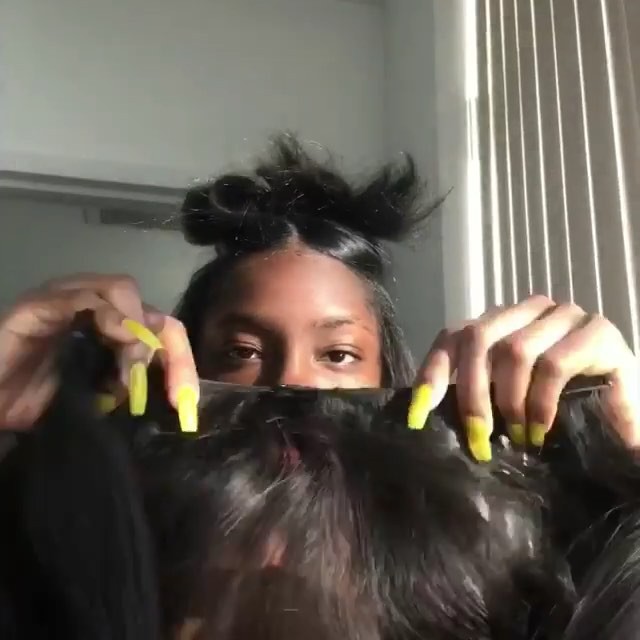
3. Clip-in extensions
Clip-in hair extensions are a type of temporary hair extension that can be easily attached and removed without the need for professional assistance. These extensions consist of hair wefts (bundles of hair) with clips attached to the base. The clips are used to secure the extensions to the natural hair, allowing individuals to achieve longer or fuller hair instantly. Here's how clip-in hair extensions typically work:
- Construction: Clip-in extensions are made of natural or synthetic hair that is attached to a weft. The weft is a narrow piece of fabric to which the hair is sewn. Small clips are attached along the top of the weft.
- Sections of Hair: The natural hair is sectioned off, typically from the bottom of the head upwards. The clip-in extensions are then strategically placed on these sections.
- Clipping In: To attach the extensions, the clips are opened, and the weft is placed near the roots of the natural hair. The clips are then snapped shut to secure the extension in place.
- Blending: Once the clip-in extensions are attached, the natural hair is combed or styled to blend with the extensions seamlessly. This helps create a natural and cohesive look.
- Styling: The hair, including the extensions, can be styled as desired, whether it's straightening, curling, or leaving it in its natural texture.
Clip-in hair extensions offer several advantages:
- Versatility: Clip-ins can be easily attached or removed, allowing for flexibility in changing hairstyles.
- No Commitment: Unlike more permanent extension methods, clip-ins can be used on special occasions or when a temporary change in appearance is desired.
- DIY Friendly: Individuals can apply clip-in extensions themselves without the need for professional assistance.
- Minimal Damage: Since clip-ins don't involve adhesives or sewing into natural hair, they typically cause minimal damage when used correctly and removed properly.
It's essential to choose high-quality clip-in extensions, match the color and texture of the natural hair accurately, and follow proper care instructions to maintain the longevity and appearance of the extensions.
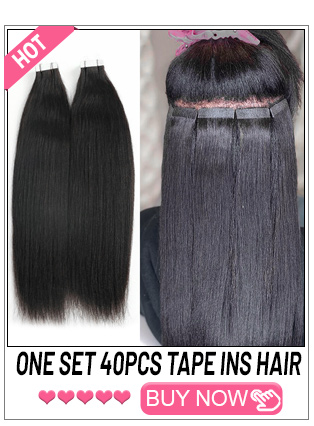
4. Tape-in extensions
Tape-in hair extensions are a type of semi-permanent hair extension method that involves attaching pre-taped wefts of hair to the natural hair. This technique is popular for its ease of application and natural-looking results. Here's how tape-in extensions are typically applied:
- Tape Wefts: Tape-in extensions come in small wefts with a thin, flat, and flexible base. Each weft has a strip of adhesive tape on one side.
- Sectioning: The natural hair is typically divided into horizontal sections. The tape-in extensions are then sandwiched around small sections of the natural hair.
- Application: The backing of the adhesive tape is removed, and the extension weft is placed close to the roots of the natural hair. Another weft with adhesive is then placed on top, sandwiching the natural hair in between.
- Pressing and Bonding: Once the wefts are in position, pressure is applied to help the adhesive bond securely with the natural hair. The extensions lie flat against the head, creating a seamless and natural look.
Tape-in extensions offer several advantages:
- Quick Application: The process of applying tape-in extensions is faster compared to some other semi-permanent methods, such as fusion bonding or sew-in weaves.
- Comfortable and Lightweight: Tape-in extensions are lightweight and lie flat against the head, providing a comfortable and natural feel.
- Versatility: They can be reused and repositioned, making them versatile for different styles.
- Natural Appearance: When properly applied, tape-in extensions provide a natural and undetectable look.
It's important to note that tape-in extensions require proper maintenance to ensure longevity. Factors such as the type of adhesive used and the quality of the extensions can influence how long they last. Additionally, removing tape-in extensions should be done carefully to avoid damage to the natural hair.
Professional application and removal are recommended for tape-in extensions to ensure they are placed correctly and safely. It's advisable to consult with a qualified stylist for the best results and to follow care instructions to maintain the health of both the extensions and the natural hair.
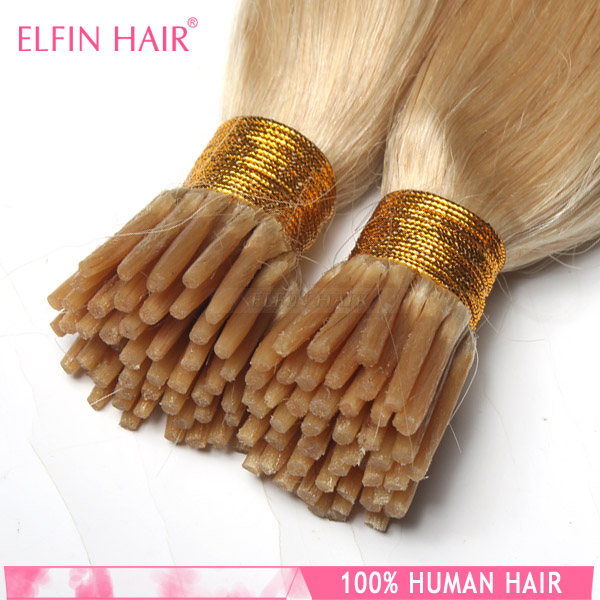
5. Microlinks
Microlinks, also known as micro bead or micro ring extensions, are a type of hair extension method that involves attaching small strands of hair to natural hair using tiny metal links or rings. This technique is considered semi-permanent, offering a method to add length, volume, or color to the hair without the need for adhesives or heat. Here's a general overview of how microlink extensions are applied:
- Sectioning: The natural hair is divided into small sections. Each section is typically a few strands of natural hair.
- Microlink Attachment: A small metal link or ring is threaded through the natural hair and positioned close to the roots. A strand of hair extension, which has a small loop at one end, is then threaded through the same metal link.
- Clamping: The metal link is then clamped shut using pliers, securing both the natural hair and the extension strand in place.
- Blending: Once attached, the microlink extensions are blended with the natural hair to create a seamless and natural look.
Microlinks offer several advantages:
- No Adhesives or Heat: Unlike some other extension methods, microlinks don't require adhesives or heat during the application process, reducing the risk of damage to the natural hair.
- Versatility: Microlinks are versatile and can be used for various hairstyles. They can also be easily removed and reinstalled.
- Natural Look and Feel: When applied correctly, microlinks provide a natural look and feel, allowing the hair to move naturally.
- Longevity: Microlink extensions can last for several weeks or even months, depending on how well they are maintained.
It's essential to have microlink extensions applied by a trained and experienced professional to ensure proper placement and prevent damage to the natural hair. Additionally, regular maintenance and care, such as avoiding excessive tension on the links and using sulfate-free products, contribute to the longevity and health of both the extensions and the natural hair. Consulting with a hairstylist who specializes in microlink extensions is advisable for those considering this method.
6. Crotchet
Crochet hair extensions, also known as crochet braids, are a popular and versatile method of adding extensions to natural hair. This technique involves using a crochet hook to attach pre-braided or pre-looped hair extensions to the existing hair. Here's an overview of the process:
- Cornrowing: The natural hair is usually cornrowed (braided) close to the scalp. The cornrows serve as a base for attaching the crochet extensions.
- Crochet Hook Application: Using a crochet hook, the hairstylist pulls individual sections of the pre-looped or pre-braided hair through the cornrows. The crochet hook is inserted underneath the cornrow, and the looped end of the extension is pulled through, securing the hair in place.
- Knotless Method: In a knotless crochet technique, the hairstylist may not tie knots to secure the extensions. Instead, they might loop the hair through the cornrows, allowing for a more natural and lightweight finish.
- Blending: Once the extensions are attached, the natural hair is blended with the crochet hair to create a seamless and natural look.
Crochet hair extensions offer several advantages:
- Quick Application: Crochet braids are known for their relatively quick application process compared to some other extension methods.
- Versatility: There is a wide variety of hair textures, colors, and styles available for crochet braids, allowing for versatility in styling.
- Protective Styling: Crochet braids can serve as a protective style, helping to protect the natural hair from environmental factors and manipulation.
- Affordability: Crochet braids are often more affordable than some other types of hair extensions.
- Low Maintenance: Once installed, crochet braids are generally low maintenance, requiring minimal styling effort.
It's important to note that proper care is still necessary to maintain the health of both the natural hair and the crochet extensions. Additionally, individuals can experiment with various crochet hair textures and styles, ranging from curly and wavy to straight and braided, depending on their preferences. Professional installation is recommended to ensure the correct technique and avoid damage to the natural hair.
Final Thoughts
In summary, there are different ways to install hair extensions, each with its own advantages. Quick weaves use bonding glue for a temporary and versatile option. Sew-in weaves involve sewing extensions into braided hair for a semi-permanent solution. Clip-in extensions are easy to attach and remove, providing flexibility. Tape-in extensions have pre-taped wefts for a semi-permanent, quick application. Microlinks use small metal rings to attach hair strands, offering a comfortable and versatile option. Crochet hair extensions use a crochet hook to attach pre-braided hair, providing a quick and affordable choice. The best method depends on personal preferences and lifestyle, and professional application is important for maintaining healthy hair.
Elevate your look with high-quality human hair extensions at elfinhair.com. Discover the perfect blend of style and quality for a stunning transformation!

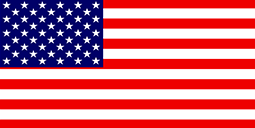 USD
USD EUR
EUR GBP
GBP CAD
CAD AUD
AUD



